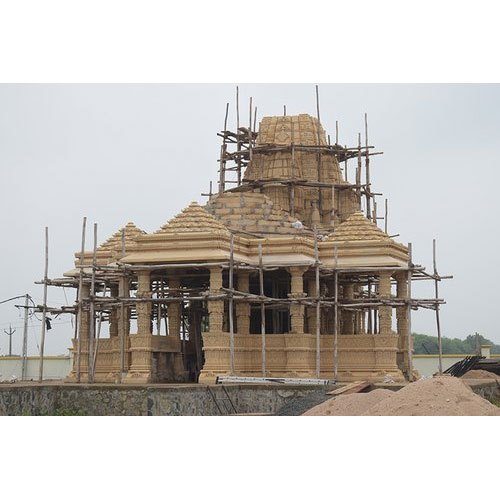Marble holds a significant place in the construction of temples around the world, revered for its beauty, durability, and spiritual symbolism. Temples, whether ancient or modern, utilize different types of marble, each chosen for specific qualities that contribute to the sacredness and longevity of these structures.
Importance of Marble in Temple Construction
Marble has been a preferred material for temple construction for centuries due to its elegant appearance and ability to withstand the test of time. Its use isn’t merely aesthetic but also symbolic, reflecting purity and permanence in spiritual contexts.
Types of Marble Used
1. Makrana Marble
Makrana marble, renowned for its milky white appearance and subtle veining, has been synonymous with temple architecture in India for ages. Quarried in Rajasthan, this marble is celebrated for its purity and has adorned iconic temples such as the Taj Mahal.
2. Italian Marble
Italian marble, known for its luxurious look and variety of colors and patterns, is often chosen for its aesthetic appeal in modern temple designs. It offers a blend of beauty and durability, making it a popular choice among temple contractors worldwide.
3. Carrara Marble
Carrara marble, another famous Italian marble, is valued for its fine texture and shades of white and gray. Its use in temples adds a classical touch while ensuring longevity and resistance to weathering.
Choosing the Right Marble
Selecting the appropriate type of marble for temple construction involves considering several factors:
- Aesthetic Appeal: The marble should align with the architectural style and spiritual ambiance of the temple.
- Durability: It must withstand environmental factors and the test of time, maintaining its beauty and structural integrity.
- Symbolic Significance: Some marbles are chosen for their symbolic associations with purity and divinity.
Role of Temple Construction Contractors
Temple construction contractors play a crucial role in sourcing, selecting, and installing marble. They work closely with architects and religious authorities to ensure that the marble used meets both aesthetic and spiritual requirements. Their expertise ensures that the temple not only looks magnificent but also stands as a testament to timeless craftsmanship.
Conclusion
Marble remains an integral part of temple construction globally, offering not just physical strength but also spiritual resonance. From the pristine Makrana marble of ancient Indian temples to the sophisticated Italian marbles used in contemporary designs, each type contributes uniquely to the grandeur and sanctity of these sacred spaces. Temple contractors, through their knowledge and skill, continue to uphold traditions while embracing modern techniques to build temples that inspire awe and reverence.
In essence, the selection of marble for temple construction is a blend of tradition, craftsmanship, and spiritual significance, ensuring that these timeless structures stand as symbols of devotion and architectural excellence for generations to come.

